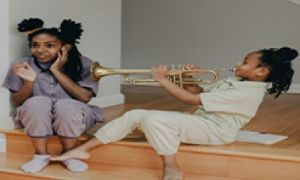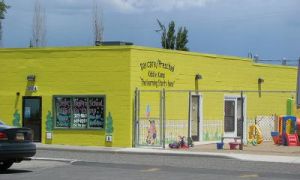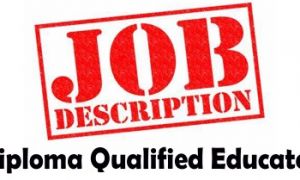Linking Theories To The Developmental Milestones
Piaget's Cognitive Development Theory
Sensorimotor Stage (Birth to 2 Years)
-
Milestone: Object Permanence
-
Theory Link: Piaget emphasized that during this stage, children learn that objects continue to exist even when they are not seen.
-
Activity: Peek-a-boo games or hiding and revealing toys help children develop this understanding.
Preoperational Stage (2 to 7 Years)
-
Milestone: Symbolic Play
-
Theory Link: Piaget highlighted that children in this stage use symbols to represent objects and engage in imaginative play.
-
Activity: Provide dress-up clothes, props, and themed play areas to encourage role-playing and symbolic thinking.
Vygotsky's Social Development Theory
Early Childhood (2 to 7 Years)
-
Milestone: Language Development
-
Theory Link: Vygotsky stressed the importance of social interactions and language in cognitive development.
-
Activity: Engage children in conversations, storytelling, and group activities that promote verbal expression and communication skills.
Middle Childhood (7 to 11 Years)
-
Milestone: Collaborative Learning
-
Theory Link: Vygotsky's concept of the Zone of Proximal Development (ZPD) emphasizes learning through guided interactions.
-
Activity: Organize group projects and peer learning opportunities where children can collaborate and support each other.
Erikson's Psychosocial Development Theory
Early Childhood (2 to 4 Years)
-
Milestone: Autonomy vs. Shame and Doubt
-
Theory Link: Erikson suggested that children need opportunities to make choices and develop a sense of autonomy.
-
Activity: Encourage self-help skills such as dressing, feeding, and choosing activities to promote independence.
Middle Childhood (4 to 6 Years)
-
Milestone: Initiative vs. Guilt
-
Theory Link: Erikson emphasized the importance of taking initiative and developing a sense of purpose.
-
Activity: Provide opportunities for children to plan and lead activities, fostering a sense of responsibility and confidence.
Montessori Method
Early Childhood (2 to 6 Years)
-
Milestone: Sensory Exploration and Independence
-
Theory Link: Montessori's approach focuses on sensory experiences and fostering independence.
-
Activity: Set up sensory tables with different textures, shapes, and colors, and provide practical life activities like pouring, cutting, and cleaning.
Gardner's Multiple Intelligences Theory
Early Childhood (2 to 7 Years)
-
Milestone: Diverse Learning Styles
-
Theory Link: Gardner proposed that children have different types of intelligences and learning preferences.
-
Activity: Offer a variety of activities that cater to different intelligences, such as music, art, physical movement, and logical puzzles.
Bronfenbrenner's Ecological Systems Theory
Early Childhood (2 to 7 Years)
-
Milestone: Social and Environmental Interactions
-
Theory Link: Bronfenbrenner emphasized the influence of various environmental systems on development.
-
Activity: Create opportunities for children to interact with their family, community, and natural environment through field trips, community projects, and family engagement activities.
Albert Bandura's Social Learning Theory
-
Observational Learning: Learning by observing others.
-
Milestone: Imitation of behaviors.
-
Self-Efficacy: Belief in one's ability to succeed.
Milestone: Confidence in trying new tasks.
Arnold Gesell's Maturational Theory
-
Developmental Norms: Typical age-related milestones.
-
Milestone: Physical growth patterns.
By linking educational theories to developmental milestones, educators can create a rich and supportive learning environment that addresses the diverse needs and strengths of each child. This approach helps children develop holistically and achieve their developmental milestones effectively.
Practical Examples Linking Developmental Theories To Developmental Milestones
Jean Piaget's Cognitive Development Theory
-
Sensorimotor Stage (0-2 years):
-
Activity: Peek-a-boo games to promote object permanence.
-
Milestone: Babies learn that objects still exist even when out of sight.
-
-
Preoperational Stage (2-7 years):
-
Activity: Pretend play with dolls or action figures.
-
Milestone: Children develop symbolic thinking and egocentric perspectives.
-
Erik Erikson's Psychosocial Development Theory
-
Trust vs. Mistrust (0-1 year):
-
Activity: Consistent caregiving routines, like feeding and diaper changing.
-
Milestone: Secure attachment and trust in caregivers.
-
-
Autonomy vs. Shame and Doubt (1-3 years):
-
Activity: Encouraging self-help skills, like dressing and feeding themselves.
-
Milestone: Developing independence and self-control.
-
-
Initiative vs. Guilt (3-6 years):
-
Activity: Providing opportunities for children to choose and lead activities.
-
Milestone: Building initiative and confidence in making decisions.
-
Lev Vygotsky's Sociocultural Theory
-
Zone of Proximal Development (ZPD):
-
Activity: Guided reading sessions where the teacher helps students tackle slightly challenging texts.
-
Milestone: Enhanced learning through scaffolded support.
-
-
Scaffolding:
-
Activity: Step-by-step instructions for complex tasks, gradually reducing assistance.
-
Milestone: Independent problem-solving and learning.
-
Maria Montessori's Educational Philosophy
-
Sensitive Periods:
-
Activity: Language-rich environments with plenty of books and verbal interactions.
-
Milestone: Rapid language acquisition.
-
-
Prepared Environment:
-
Activity: Child-sized furniture and accessible materials to promote exploration.
-
Milestone: Self-directed learning and autonomy.
-
Albert Bandura's Social Learning Theory
-
Observational Learning:
-
Activity: Demonstrating a task and then allowing children to mimic it.
-
Milestone: Learning new skills through imitation.
-
-
Self-Efficacy:
-
Activity: Providing positive feedback and encouragement for attempts at new tasks.
-
Milestone: Building confidence and resilience.
-
Arnold Gesell's Maturational Theory
-
Developmental Norms:
-
Activity: Tracking physical milestones like crawling, walking, and fine motor skills.
-
Milestone: Monitoring age-appropriate physical development.
-
These practical examples can help educators apply developmental theories in the classroom to support children's growth and learning effectively.
Further Reading
Child Theorists and Their Theories in Practice
Linking Theories To The EYLF
Child Theorists Posters
Incorporating Theorists Into Early Childhood Documentation


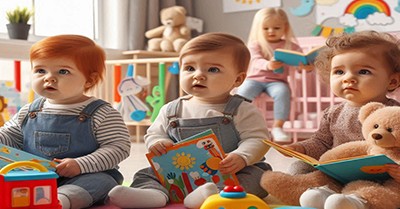




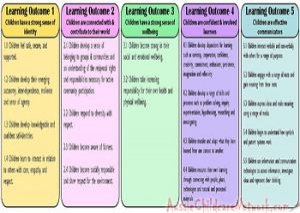 Here is the list of the EYLF Learning Outcomes that you can use as a guide or reference for your documentation and planning. The EYLF
Here is the list of the EYLF Learning Outcomes that you can use as a guide or reference for your documentation and planning. The EYLF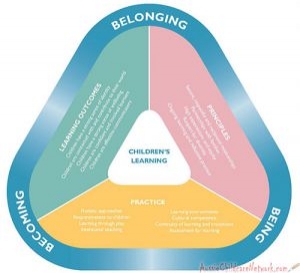 The EYLF is a guide which consists of Principles, Practices and 5 main Learning Outcomes along with each of their sub outcomes, based on identity,
The EYLF is a guide which consists of Principles, Practices and 5 main Learning Outcomes along with each of their sub outcomes, based on identity, This is a guide on How to Write a Learning Story. It provides information on What Is A Learning Story, Writing A Learning Story, Sample
This is a guide on How to Write a Learning Story. It provides information on What Is A Learning Story, Writing A Learning Story, Sample One of the most important types of documentation methods that educators needs to be familiar with are “observations”. Observations are crucial for all early childhood
One of the most important types of documentation methods that educators needs to be familiar with are “observations”. Observations are crucial for all early childhood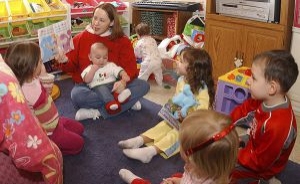 To support children achieve learning outcomes from the EYLF Framework, the following list gives educators examples of how to promote children's learning in each individual
To support children achieve learning outcomes from the EYLF Framework, the following list gives educators examples of how to promote children's learning in each individual Reflective practice is learning from everyday situations and issues and concerns that arise which form part of our daily routine while working in an early
Reflective practice is learning from everyday situations and issues and concerns that arise which form part of our daily routine while working in an early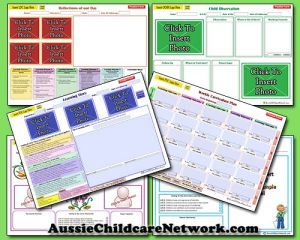 Within Australia, Programming and Planning is reflected and supported by the Early Years Learning Framework. Educators within early childhood settings, use the EYLF to guide
Within Australia, Programming and Planning is reflected and supported by the Early Years Learning Framework. Educators within early childhood settings, use the EYLF to guide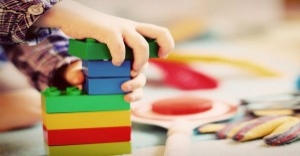 When observing children, it's important that we use a range of different observation methods from running records, learning stories to photographs and work samples. Using
When observing children, it's important that we use a range of different observation methods from running records, learning stories to photographs and work samples. Using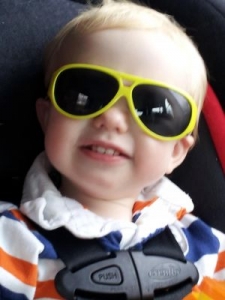 This is a guide for educators on what to observe under each sub learning outcome from the EYLF Framework, when a child is engaged in
This is a guide for educators on what to observe under each sub learning outcome from the EYLF Framework, when a child is engaged in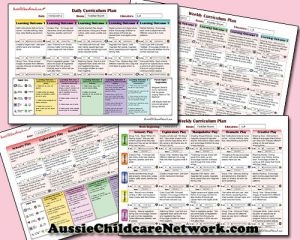 The Early Years Learning Framework describes the curriculum as “all the interactions, experiences, activities, routines and events, planned and unplanned, that occur in an environment
The Early Years Learning Framework describes the curriculum as “all the interactions, experiences, activities, routines and events, planned and unplanned, that occur in an environment